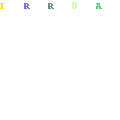5 Ways to Calm Hunger Pangs
 Do you start getting hunger pangs at 11:50 a.m. in anticipation of lunch? We've all been there. The cause is the hormone ghrelin; released when the stomach is empty, it sets off a chain reaction in the body to make you hungry. In general, you want to keep levels of ghrelin low during the day so you can keep hunger in check. Apart from an empty stomach, there are several factors that can raise ghrelin levels, including drinking alcohol, eating too few calories, and eating greasy, fatty foods. Here are some strategies that will help you manage these triggers and keep your ghrelin levels from rising:
Do you start getting hunger pangs at 11:50 a.m. in anticipation of lunch? We've all been there. The cause is the hormone ghrelin; released when the stomach is empty, it sets off a chain reaction in the body to make you hungry. In general, you want to keep levels of ghrelin low during the day so you can keep hunger in check. Apart from an empty stomach, there are several factors that can raise ghrelin levels, including drinking alcohol, eating too few calories, and eating greasy, fatty foods. Here are some strategies that will help you manage these triggers and keep your ghrelin levels from rising:
Have a substantial breakfast. One study showed that people who ate a higher-calorie breakfast produced 33 percent less ghrelin throughout the day and felt satisfied for a longer period of time. Try a whole-wheat English muffin with organic peanut butter, a cup of strawberries, and some low-fat yogurt.
Choose complex carbs and get more fiber. Insulin and ghrelin go hand in hand. When insulin goes up after you eat, ghrelin goes down. If you eat the wrong kind of carbohydrates — refined carbs such as white bread and pasta — your blood sugar rises dramatically. In response, your body releases a surge of insulin to clear that sugar from the bloodstream. The insulin does its job very efficiently, and the resulting low blood sugar causes hunger sooner. These constant blood sugar ups and downs can wreak havoc on your metabolism, so it's best to eat complex carbs and fiber, which delay the release of sugar into the bloodstream so that insulin levels are kept stable and you feel full longer.
Eat on a schedule. Research has found that ghrelin levels rise and fall at your usual mealtimes, so eating on a schedule prevents spikes in ghrelin. If you're running errands and are away from the kitchen at one of your typical mealtimes, carry a small bag of almonds or other nuts with you — you can eat a little something to keep your stomach satisfied until you can get home and have a real meal.
Emphasize high-volume, low-calorie foods. Levels of ghrelin remain high until food stretches the walls of your stomach, making you feel full. High-volume, low-calorie foods, such as salads and soups, reduce ghrelin levels long before you've overeaten. All green veggies and any foods with a high water content count as high-volume, low-calorie foods.
Eat protein. Protein-rich foods can also suppress ghrelin levels — they help create a long-lasting feeling of fullness. Try adding whey protein to a low-calorie smoothie. (If you're sensitive to gluten, just be sure to check the ingredients list; some whey protein products contain gluten.) One study found that whey brought about a prolonged suppression of ghrelin.

Great information!
ReplyDeleteCouldn't agree with this more!! Same advice I've gotten from many experts. Also, try not to drink your calories except in certain situations. Body needs that food to chomp on through the day. :-)
ReplyDeleteI don't get hungry at 11:50 cause I typically eat lunch at 11:30'ish, ha!